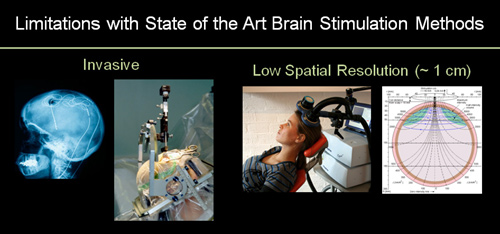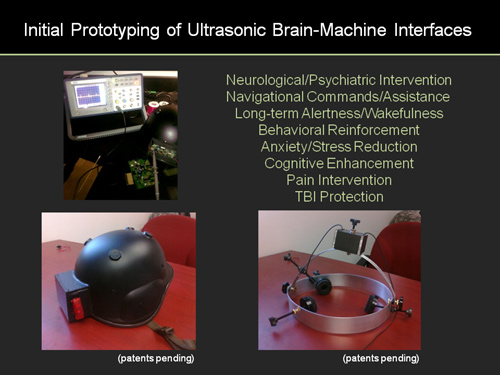Remote Control of Brain Activity Using Ultrasound
September 10, 2010
Researchers led by Dr. William J. Tyler, an Assistant Professor in the School of Life Sciences at Arizona State University has developed a novel technology that implements transcranial pulsed ultrasound to remotely and directly stimulate brain circuits without requiring surgery. The technology has a spatial resolution approximately five times greater than transcranial magnetic stimulation (TMS) and can exert its effects upon subcortical brain circuits deep within the brain.

These illustrations show the surgical invasiveness of deep-brain stimulating electrodes (left) and depict the low spatial resolutions conferred by transcranial magnetic stimulation (right). (Tyler Lab)
They plan to continue exploring the influence of ultrasound on brain function and begin using transducer phased arrays to examine the influence of focused ultrasound on intact brain circuits. We will also be investigating the use of capacitive micromachined ultrasonic transducers (CMUTs) for use in brain stimulation. Finally, to improve upon spatial resolution, we will examine the use of acoustic metamaterials and hyperlenses to study how subdiffraction limited ultrasound influences brain wave activity patterns.
They have also developed working and conceptual prototypes in which ballistic helmets can be fitted with ultrasound transducers and microcontroller devices to illustrate potential applications.

A ballistic helmet fitted with four ultrasound transducers (left) and another functional prototype for achieving human brain stimulation using a single element transducer (bottom-right), as well as a list of potential applications relevant to the defense industry. (Tyler Lab)
More info: ARMED WITH SCIENCE